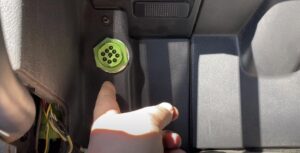
Driving in a new country can be both an exciting adventure and a daunting experience, especially when it comes to understanding local road rules. One of the most common questions for travelers and expatriates in France is: “What side of the road do they drive on in France?” This article delves into this query, exploring the norms of driving on French roads.
Understanding the French Way: Driving on the Right
In France, like in many other countries, the rule is to drive on the right-hand side of the road. This standard is crucial for traffic harmony and safety. Here’s a breakdown of what you need to know:
| Topic | Information |
| General Rule | The primary rule to remember when driving in France is to stay on the right side of the road. This applies to all types of roads, from narrow village streets to broad city boulevards. |
| Traffic Flow | The flow of traffic in France follows a right-hand rule, meaning that vehicles keep to the right side of the road. This ensures consistency and predictability on the road, reducing the risk of accidents. |
| Lane Discipline | When driving on multi-lane roads, it’s crucial to maintain lane discipline. The right lane is generally for normal driving, while the left lane is reserved for overtaking slower vehicles. |
City Streets in France
When navigating the bustling streets of French cities, understanding the right-side driving rule is of utmost importance:
- Intersections: At intersections, priority is usually given to the vehicle approaching from the right. So, if you arrive at an intersection simultaneously with another vehicle, yield to the right;
- Roundabouts: In roundabouts, vehicles inside the circle have the right of way. Approach the roundabout from the right, yield to circulating traffic, and indicate your exit;
- Parking: Park your vehicle on the right side of the road unless otherwise indicated by road signs or markings.
Rural Roads and Countryside Driving
Driving on the right remains consistent when you venture onto the quieter roads of the French countryside:
- Narrow Roads: Many rural roads in France can be quite narrow. In such cases, prioritize allowing oncoming traffic to pass safely by keeping to your right;
- One-Way Streets: Be aware of one-way streets, often found in small villages. Follow the direction indicated, and remember to drive on the right side of the road;
- Farm Vehicles: On rural roads, you may encounter farm vehicles, so exercise caution and yield the right of way when necessary.
Driving on French Motorways and Highways
French motorways, known as “autoroutes,” are well-maintained and efficient. When traveling on these high-speed roads:
- Entrance and Exit Ramps: Use entrance ramps to merge onto the motorway while staying on the right. Similarly, when exiting, follow the signs and use the right-most lane for your exit;
- Overtaking: Overtake slower vehicles by moving to the left lane, but always return to the right lane once you have passed. The left lane is not for cruising; it’s for overtaking only;
- Rest Areas and Services: Rest areas and service stations are typically well-marked on motorways, making it easy to access facilities while maintaining right-side driving.
The Historical Perspective
The tradition of driving on the right side of the road can be traced back centuries in France. Its origins are not only practical but also deeply rooted in history. Several factors contributed to the adoption of this practice:
- Medieval Tradition: In medieval Europe, jousting tournaments were popular events. Knights, who predominantly used their right hand (the dominant hand) for combat, preferred to ride on the left side of the road. This allowed them to have their right hand free for protection and to engage in combat effectively;
- Pre-Revolutionary France: Before the French Revolution (1789-1799), road usage in France was highly unregulated. However, the majority of travelers preferred to ride on the right side due to the influence of medieval traditions and the fact that most people were right-handed;
- Napoleon’s Influence: Napoleon Bonaparte played a significant role in standardizing right-side driving in France. During his rule (1799-1814), he implemented several road regulations, including the requirement for carriages to drive on the right. This further cemented the practice.
The Paris Convention of 1909
While right-side driving was already customary in France, it was the Paris Convention of 1909 that formalized and standardized this practice. The convention, also known as the “Convention relative to the Regulation of Motor Traffic,” aimed to establish international standards for road traffic.
Table: Key Points of the Paris Convention (1909)
| Point | Description |
| Article 2 | Defined that traffic should keep to the right side of the road, aligning with France’s existing practice. |
| Article 8 | Established that vehicles approaching from the right have the right of way. |
| Article 9 | Required the installation of traffic signs and signals for road safety. |
| Article 15 | Outlined rules for overtaking other vehicles, emphasizing the importance of visibility and caution. |
Impact and Significance
The Paris Convention of 1909 had a profound impact not only on France but also on many other countries. It set a precedent for right-side driving, which was gradually adopted by numerous nations. The convention’s key principles, such as driving on the right and yielding to vehicles on the right, remain integral to modern road safety regulations worldwide.
Understanding this historical context is crucial for answering the question, “What side of the road do they drive on in France?” It sheds light on the evolution of road traffic regulations and the cultural and practical factors that have influenced this practice over the centuries.
Road Signage and Lane Discipline

In France, road signage and lane discipline are essential aspects of ensuring safe and orderly traffic flow. These elements are designed with right-side driving in mind, and understanding them is crucial for both residents and tourists. Here’s a detailed look at how road signage and lane discipline impact driving in France:
Multi-Lane Roads
On multi-lane roads in France, drivers adhere to specific lane discipline rules:
- Rightmost Lane: The rightmost lane is designated for regular driving at a moderate speed. It is primarily used by vehicles traveling at or near the speed limit;
- Left Lanes: The left lanes are typically reserved for overtaking slower-moving vehicles. These lanes are used to pass vehicles in the right lane or those traveling below the speed limit. Overtaking is an essential part of maintaining smooth traffic flow on multi-lane roads;
- Reversible Lanes: In some urban areas with heavy traffic, reversible lanes may exist. These lanes can change direction depending on the time of day to optimize traffic flow. Drivers should be cautious and follow lane direction indicators during these changes.
Right of Way in Roundabouts
Roundabouts are a common feature of French road networks. When approaching a roundabout, it is crucial to understand the right of way:
- Inside Traffic: Vehicles already inside the roundabout have the right of way. If you are entering a roundabout, you must yield to traffic already circulating within it;
- Indicator Signals: To indicate your intentions, use your vehicle’s turn indicators when approaching and exiting a roundabout. Signal right when exiting.
Road Signage in France
French road signs play a pivotal role in ensuring road safety and guiding drivers. They are designed to be clear and easily comprehensible, even for international visitors. Here are some key aspects of road signage in France:
| Road Sign Categories | Description |
| International Signage Standards | France adheres to international standards for road signs, using familiar symbols and colors. For instance, stop signs are octagonal and red, while yield signs are triangular with a red border. |
| Directional Signs | Green signs indicate directions to cities and towns. Distances are typically given in kilometers. Blue signs provide information about services like rest areas, gas stations, and tourist attractions. |
| Regulatory Signs | These signs inform drivers about specific rules and regulations. Examples include speed limit signs, no-entry signs, and parking restrictions. |
| Warning Signs | These signs alert drivers to potential hazards ahead, such as curves, intersections, and pedestrian crossings. They are typically yellow with black symbols. |
| Informational Signs | These signs provide useful information, such as distance markers, route numbers, and road names. |
| Exit Signs | On highways and major roads, exit signs indicate upcoming exits and the destinations they lead to. Pay close attention to these signs to ensure you exit at the correct location. |
| Toll Booth Signs | If you are traveling on a toll road, follow signs indicating the approach to toll booths. Ensure you have the necessary payment method ready, as some toll booths may not accept cash. |
Right-Side Driving and Safety
Safety is of utmost importance when driving, and adhering to the right-side driving rule is a fundamental aspect of road safety in France. Here, we provide detailed information and practical tips to ensure your safety and the safety of others while driving on the right side of the road in France.
Stay Vigilant
Driving on the right side can be a significant adjustment, especially if you’re accustomed to driving on the left. To enhance safety, consider these key points:
- Awareness: Always be conscious of the right-side driving rule. It’s essential to remain vigilant and maintain a continuous awareness of your position on the road;
- Visual Cues: Pay attention to road markings, signs, and other visual cues. They will help you stay on the correct side of the road, especially at intersections and roundabouts;
- Mirror Use: Make regular use of your mirrors to monitor traffic around you. This is crucial for safely changing lanes, merging, and maneuvering in traffic;
- Practice: If you’re not used to right-side driving, practice in a safe and less congested area before venturing into busier traffic.
Adapt to Local Practices
Understanding the nuances of how driving is conducted in France is essential for a safe and smooth driving experience. Consider the following:
- Intersections: In France, vehicles often yield to the right at intersections unless road signs or road markings indicate otherwise. Be prepared for this practice and give way to vehicles approaching from the right when applicable;
- Pedestrian Crossings: French drivers tend to be more cautious at pedestrian crossings, so always be prepared to stop and yield to pedestrians waiting to cross the road. Watch for zebra crossings and pedestrian signals;
- Roundabouts: As previously mentioned, vehicles inside a roundabout have the right of way. When entering a roundabout, yield to traffic already circulating within it. Indicate your exit using your vehicle’s turn signals.
Driving in France: Practical Tips

To ensure your safety while driving on the right side in France, consider the following practical tips:
- Renting a Car: If you’re renting a car, ensure that you are comfortable with a right-hand drive vehicle. Take some time to get acquainted with the car’s controls and driving position before hitting the road;
- GPS and Navigation: Modern GPS systems are invaluable tools for navigation in a foreign country. Ensure your GPS is set to provide instructions for right-side driving. This will help you stay on course and navigate effectively;
- Parking: Parking rules and arrangements are designed in accordance with right-side driving in France. Pay attention to road signs and markings, and be mindful of parking regulations to avoid fines or inconvenience.
Conclusion
Understanding what side of the road to drive on in France is more than just a rule; it’s an integral part of safely navigating and enjoying the beautiful French roads. Whether you’re exploring the countryside or navigating the busy streets of Paris, remembering to drive on the right side is key to a smooth and enjoyable experience.
This guide has aimed to provide thorough insights into the question, “What side of the road do they drive on in France?” By now, you should feel confident about driving in France, equipped with the knowledge and tips for a safe journey. Remember, when in France, right is right!
FAQ
Q: What side of the road do they drive on in France, especially in rural areas?
A: Regardless of urban or rural settings, the rule is to drive on the right side.
Q: For a British driver, what are the key adjustments when driving in France?
A: The most significant change is adapting to driving on the right side of the road. It’s also important to get used to right-hand drive vehicles.
Q: How does right-side driving in France affect tourists from right-side driving countries?
A: Tourists from countries where driving is on the right side will find French roads quite familiar. However, awareness of local traffic rules and signs is still crucial.
Q: What side of the road do they drive on in France compared to its neighbors?
A: Most of France’s neighbors, including Germany, Spain, and Italy, also drive on the right side, ensuring consistency across borders.
Q: Are there any exceptions to the right-side driving rule in France?
A: No, the right-side driving rule is universal across France.





